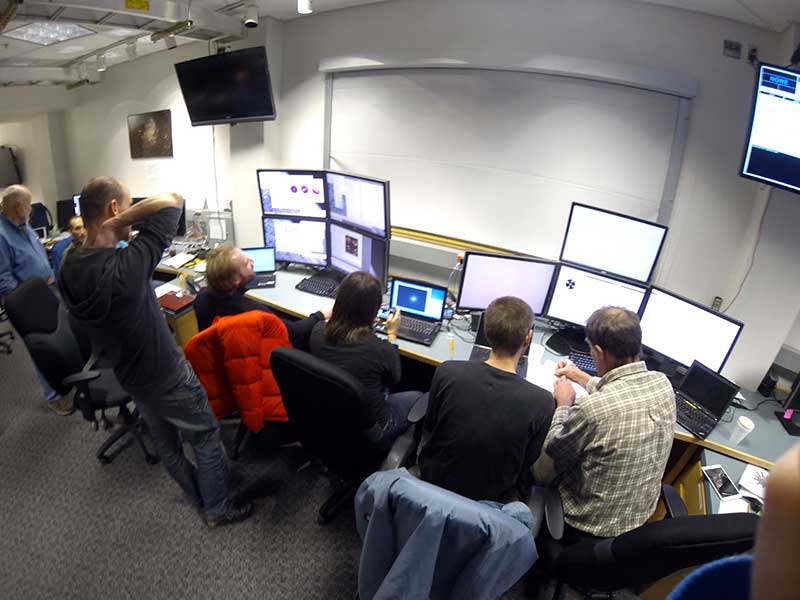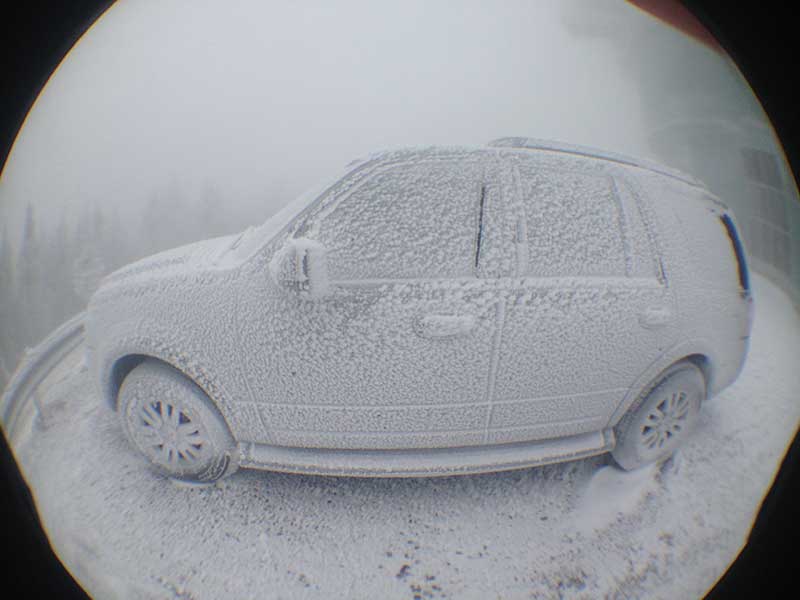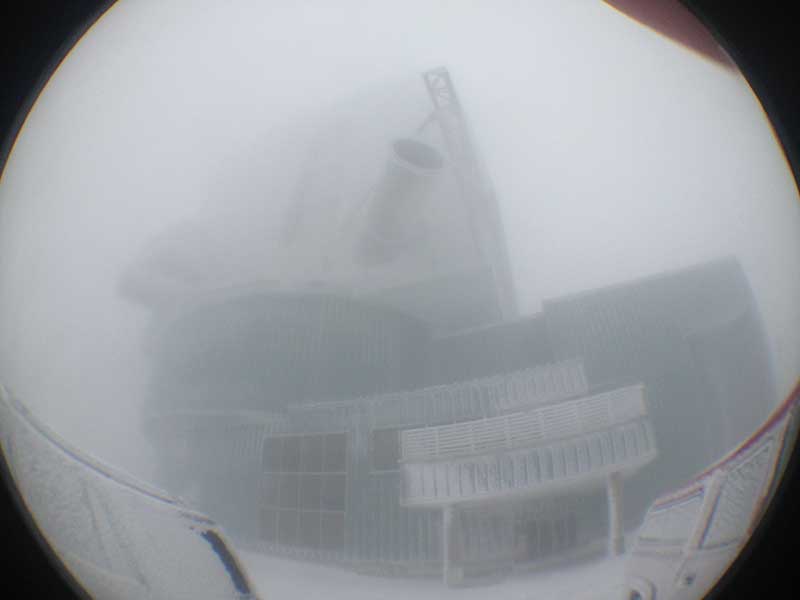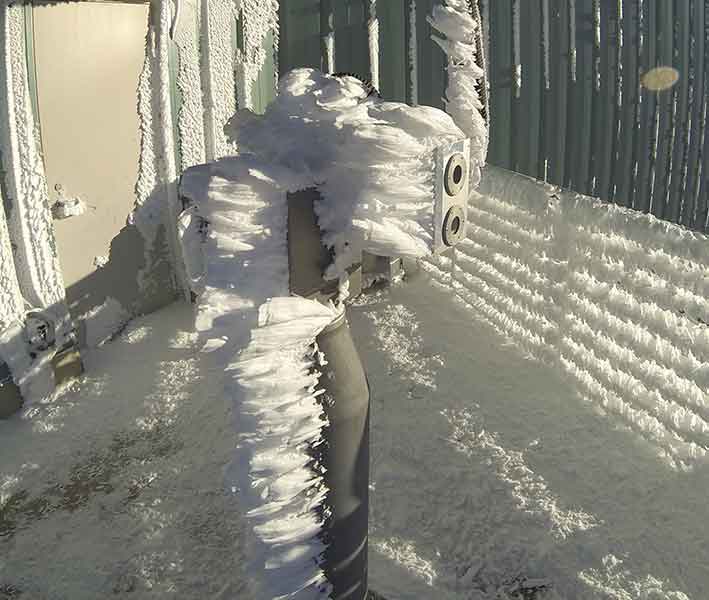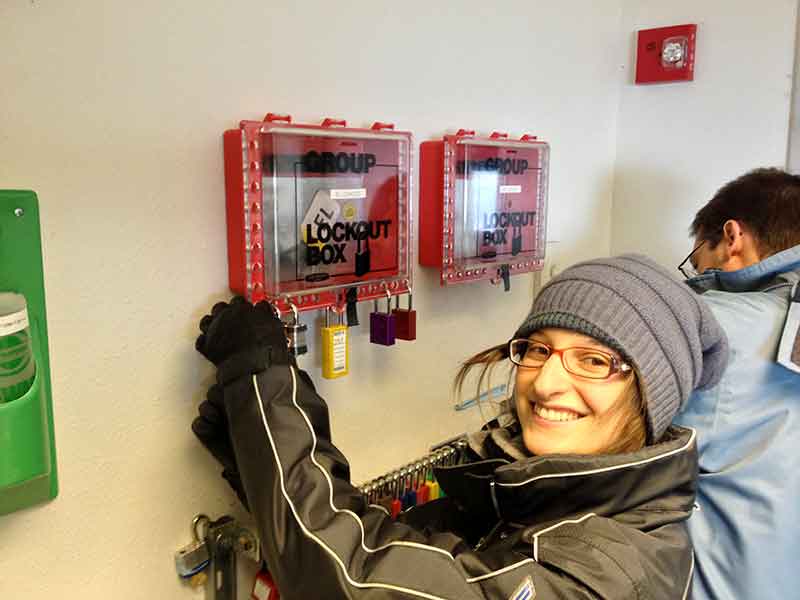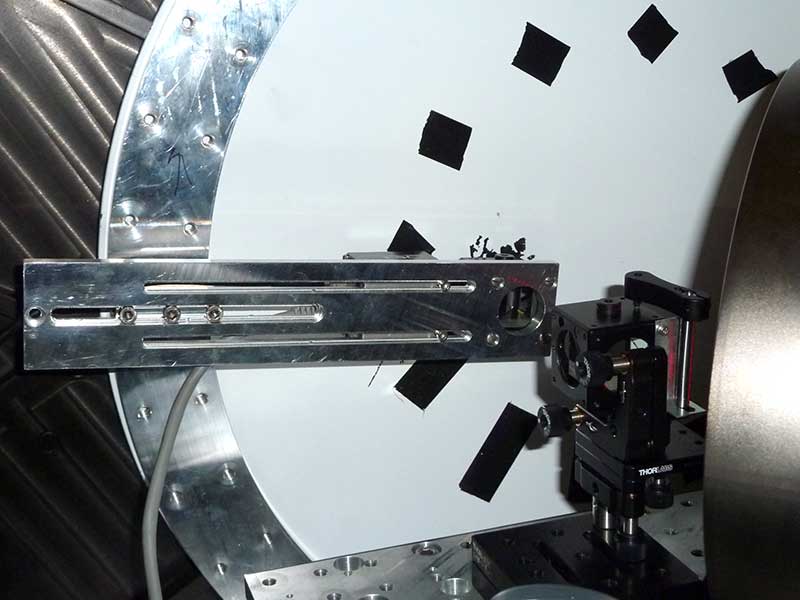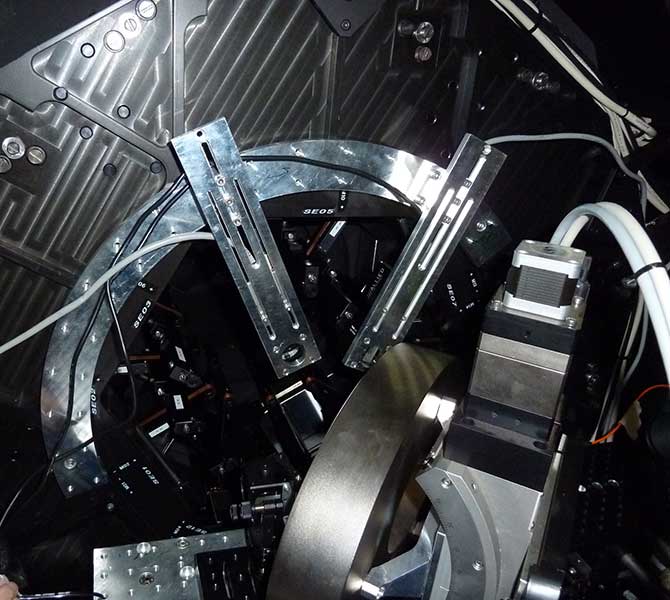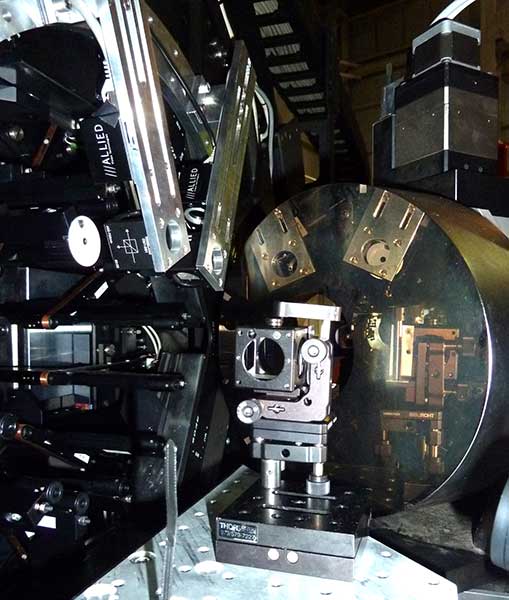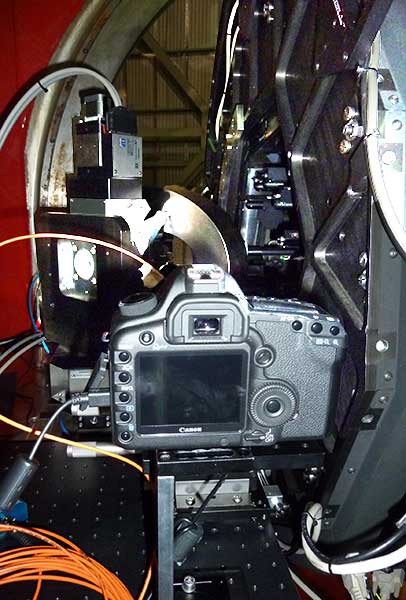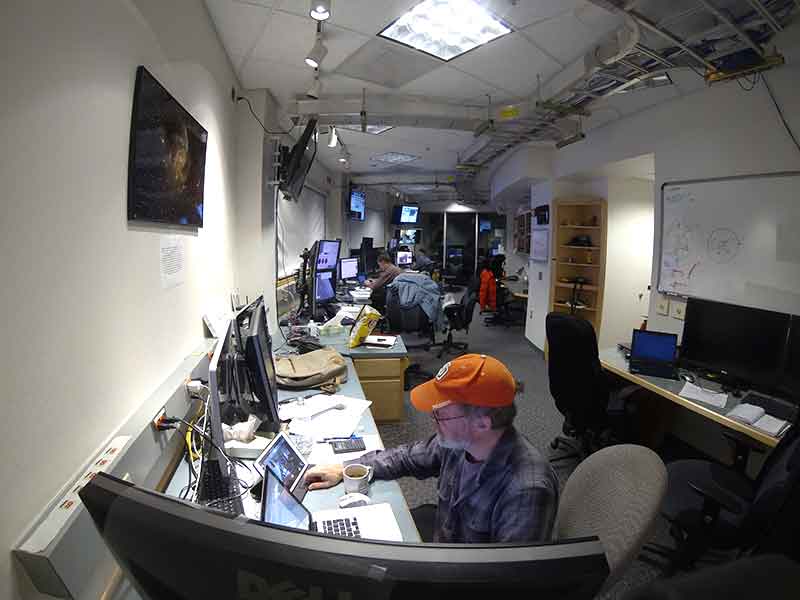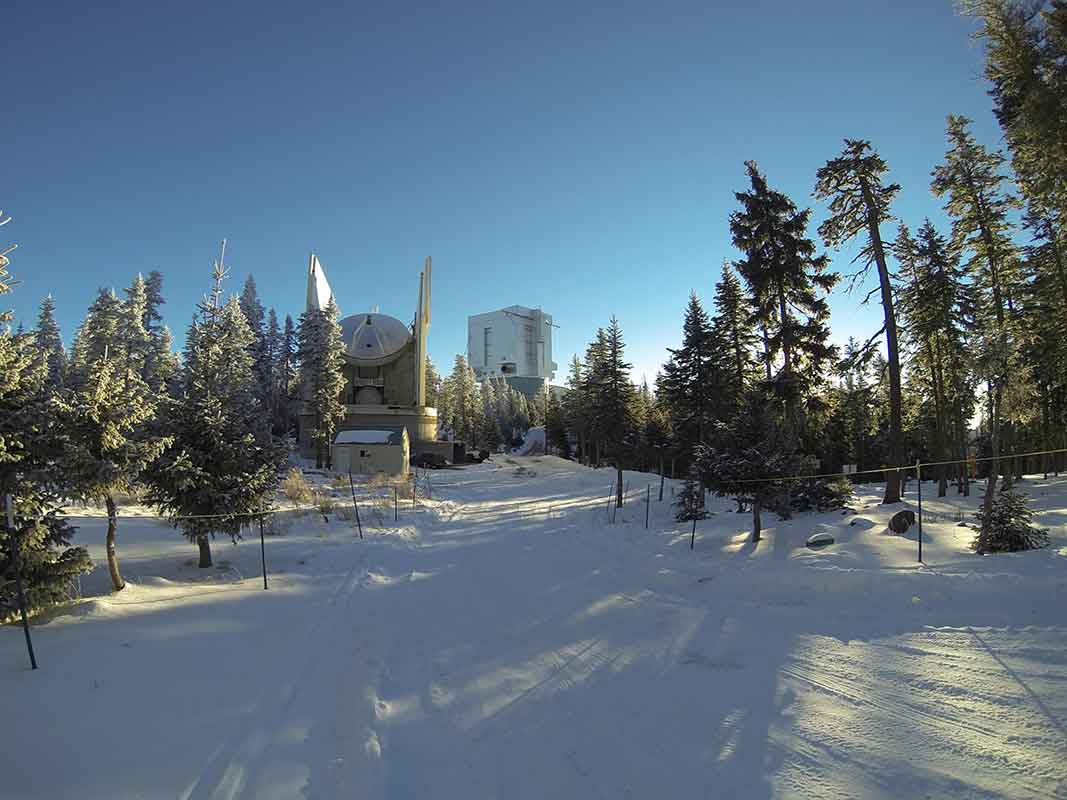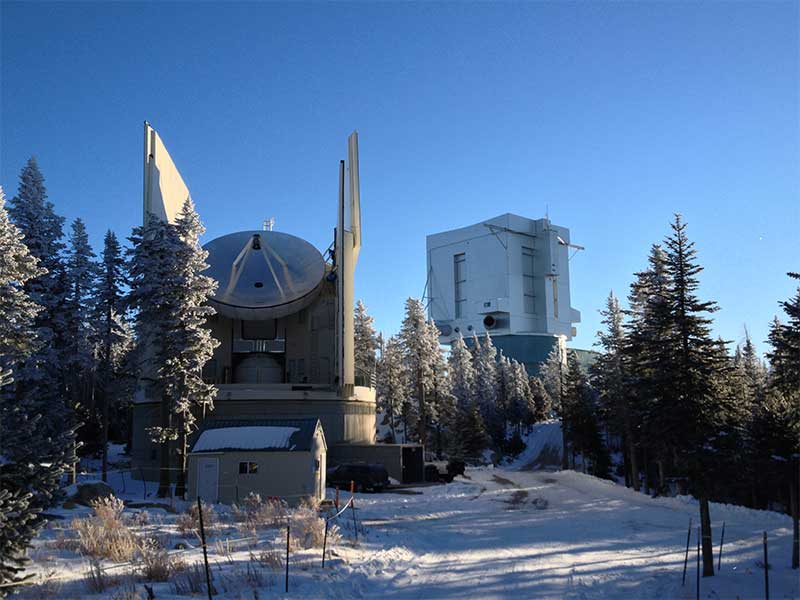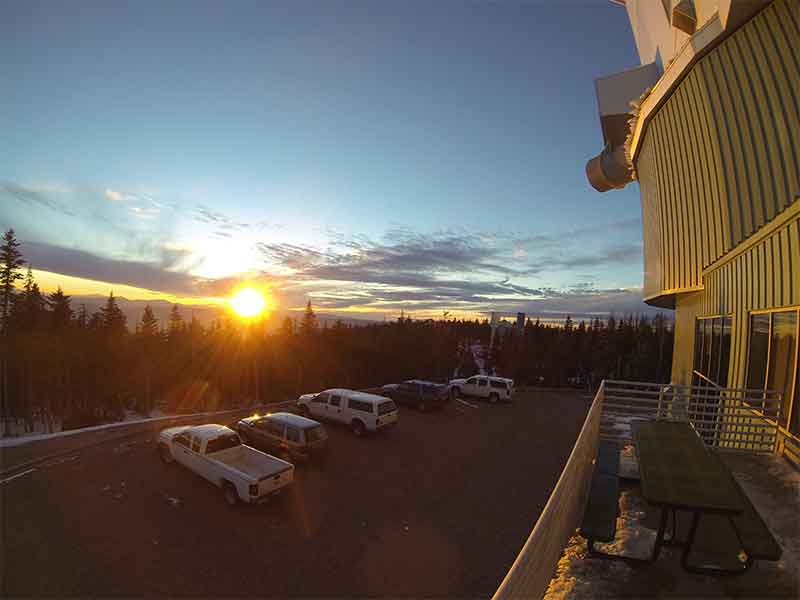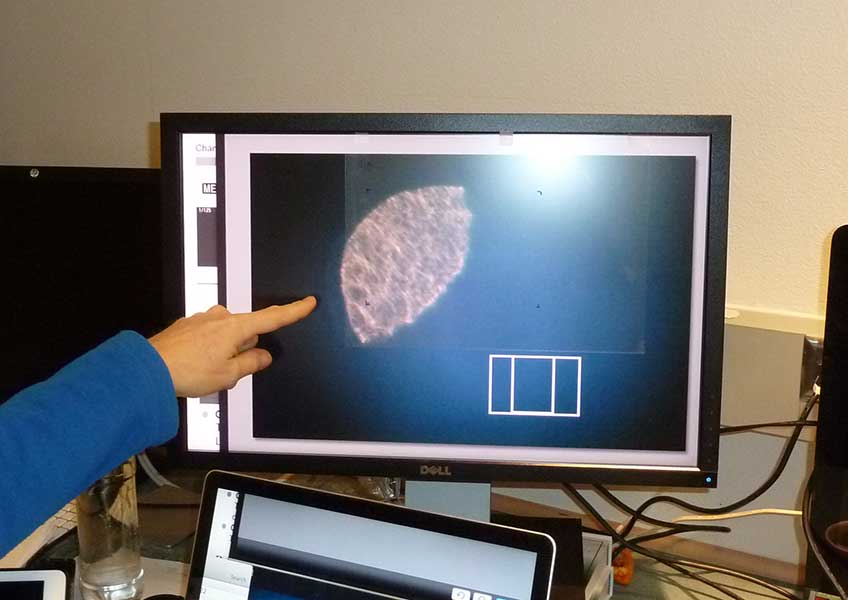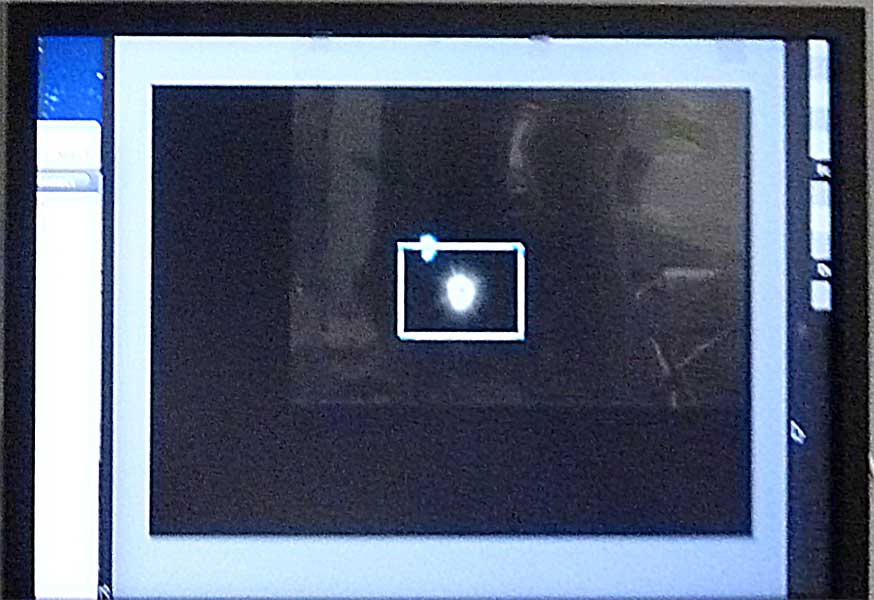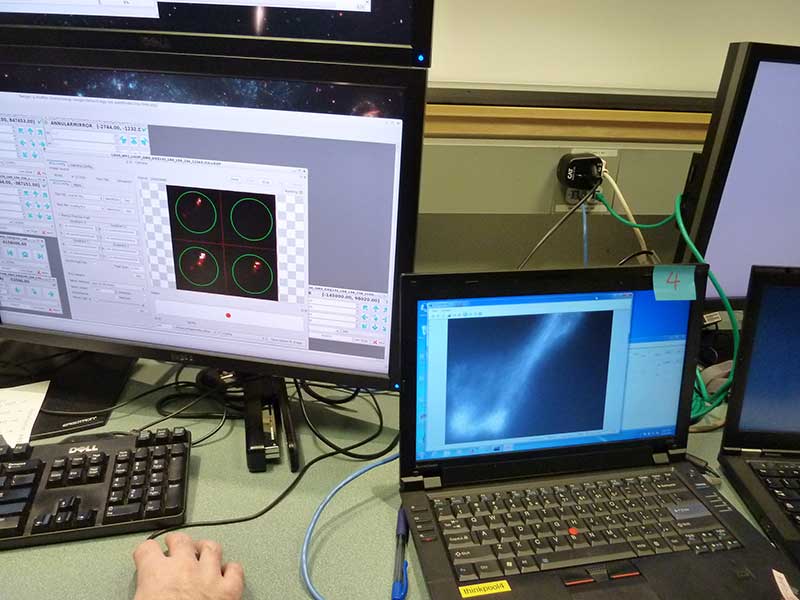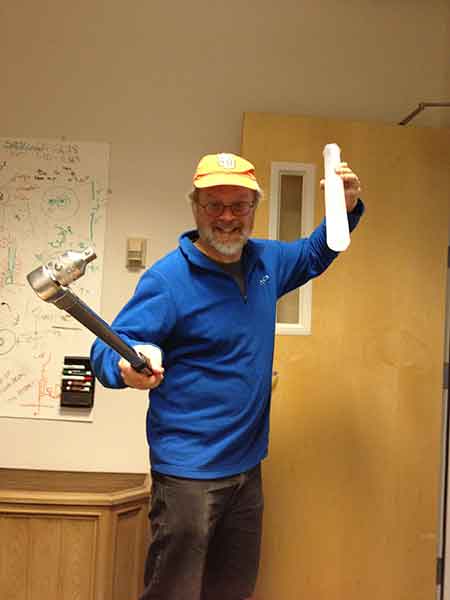Pathfinder Off-Axis Testing – December 2013
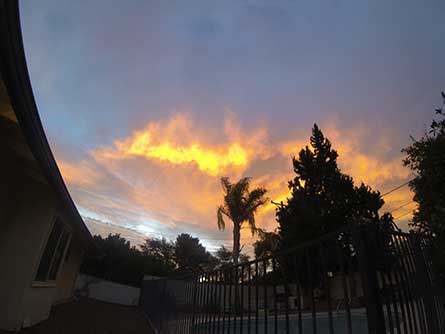 Only two weeks after achieving First Light (see here), the Pathfinder team returned to Mount Graham with the goal of closing the adaptive optics loop using at least one off-axis star probe. This required implementation and testing of a number of new software packages and telescope interfaces. This activity took place during the first four days of daytime-only activity on the mountain.
Only two weeks after achieving First Light (see here), the Pathfinder team returned to Mount Graham with the goal of closing the adaptive optics loop using at least one off-axis star probe. This required implementation and testing of a number of new software packages and telescope interfaces. This activity took place during the first four days of daytime-only activity on the mountain.
The image at right shows the skies above Tucson that greeted the team upon arrival. Note that nice sunrises don't necessarily mean nice observing conditions !
Daytime Activity - (4 days, 3-7 December 2013)
Correcting ground layer turbulence with off-axis star probes brings a number of unique challenges. Primary among these is the fact that the sky rotates, while the adaptive secondary mirror does not. This creates a continuously changing, rotating relationship between the wavefront sensor and the actuators in the deformable mirror. Pathfinder, and ultimately LINC-NIRVANA, adopts a couple of strategies to deal with this situation. The first approach is to calibrate the relationship at a number of relative angles, and then to “hand over” the calibration as needed on sky. A second approach may ultimately prove better, but it needs experimental verification. The idea is to adopt a single, well-established calibration and then to continuously rotate it numerically in the computer.
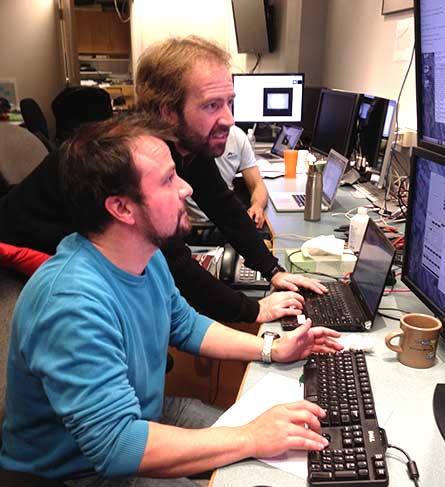
Jürgen and Carmelo work on the rotating calibration.
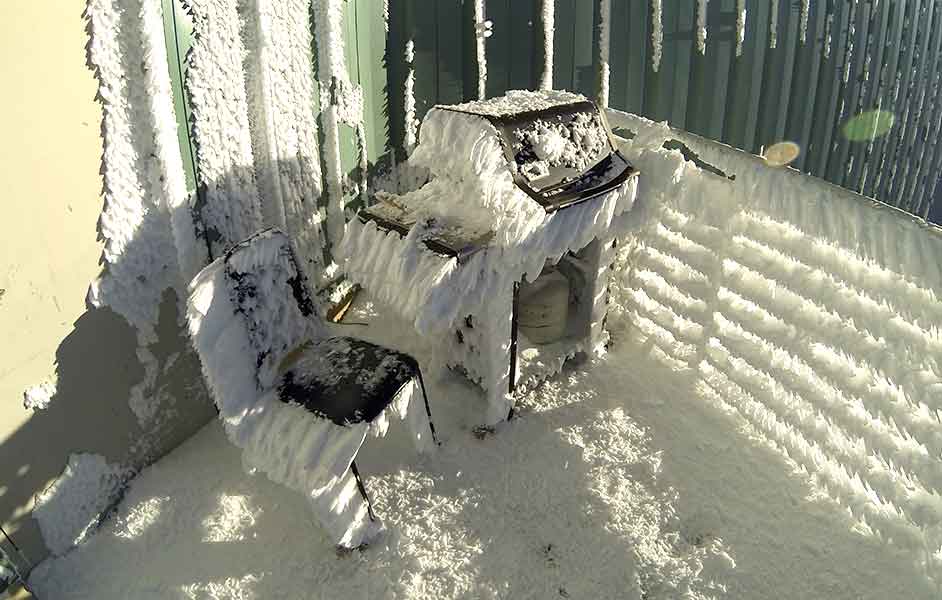
Eventually, we plan to use this thing (see T5 image here).
With this method, there is never any mis-registration between sensor and sky, and of course, calibration is much more efficient. A large fraction of the T6 daytime activity focused on both calibration and verification of these two approaches. An additional substantial task was verification and testing of the telescope interface for rotating Pathfinder (see below). The team also refined communication interfaces and offsetting strategy for acquisition of guide stars. There was hardware work to be done as well. In preparation for T6, the team had prepared two camera arms that could be placed in front of the star probes to assist in acquisition. This would allow real-time verification of the pointing and offset algorithms. The team installed the additional hardware and verified its proper performance.

Maria installing the supplementary star probe cameras.
Nighttime Activity - (4 half nights 7-10 December 2013)
Nighttime operation began on 7 December. Unfortunately extremely high wind prevented any observations, and the team continued and refined their daytime work. Conditions did not improve the next night, as high humidity and cloud kept the dome closed.
Night 3 worked out a little better. In fact, it worked out a lot better. The sky was (more or less) clear and the team was ready by 5 PM. They acquired their first target, alpha Andromedae, on-axis half an hour later, and they managed to find it with the off-axis star probe on their very first try.
This turned out to be a combination of good preparation and good luck, and the team spent the next hour refining the pointing and offset calculations so that they could move easily from on-axis to off-axis. They also closed the loop using the off-axis reference, a major Pathfinder milestone.
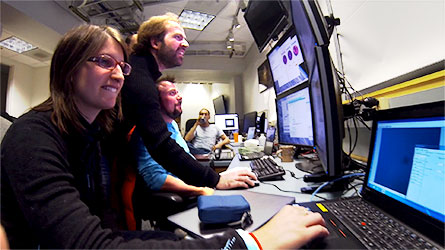
Closing the adaptive optics loop on a rotating, off-axis star.
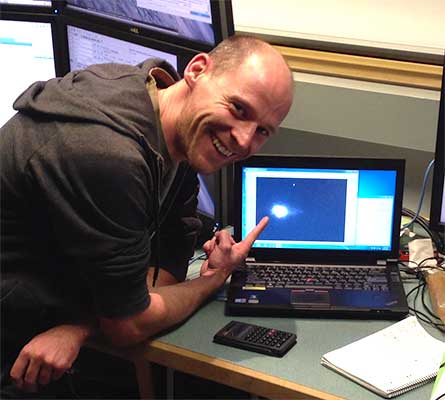
Look! No drift! Frank likes his bearing rotation algorithm...
Click the play button to see a "cinema verité" video of on-axis and off-axis star acquisition using two separate star probes.
The team then turned to the task of maintaining closed-loop control with a rapidly rotating field of view. This, in turned, required proper operation of the rotator software service for Pathfinder and the glitch-free upload of calibration information to the adaptive secondary mirror. After some minor struggles, the team achieved their goal of rotating, closed loop operation, another major milestone.
Night 4 unfortunately returned to the original pattern: heavy cloud obscured much of the sky at sunset, and the team occasionally had difficulty seeing Capella (0.9 mag) in exposures of several seconds. Nevertheless, the team prepared for an additional goal of the T6 campaign: acquiring and closing the loop on a different off-axis star probe, specifically Star-Enlarger number 6 (SE06). This was important because all calibrations and sky measurements up to that point used Star-Enlarger number 4 (SE04). Despite the heavy cloud and strong scattered moonlight, the team succeeded in pointing to SE06 and closed the loop using the SE04 calibration.
Thus, despite bad luck with the weather (only 0.6 nights out of four half nights were usable), the team accomplished all of its baseline goals for T6. They came very close to achieving an extended goal as well, namely acquiring and closing the loop on two off-axis stars simultaneously. Unfortunately, persistent cloud and eventually, the clock on the wall, forced an end to a very successful observing run.
Adaptive optics can do more than correct atmospheric turbulence. Click the play button to watch Pathfinder remove significant static telescope aberrations.
Pathfinder Off-Axis Campaign Slide Show
Click the forward and back arrows to see a slideshow of the Pathfinder Off-Axis campaign (T5). There are 18 slides total.
